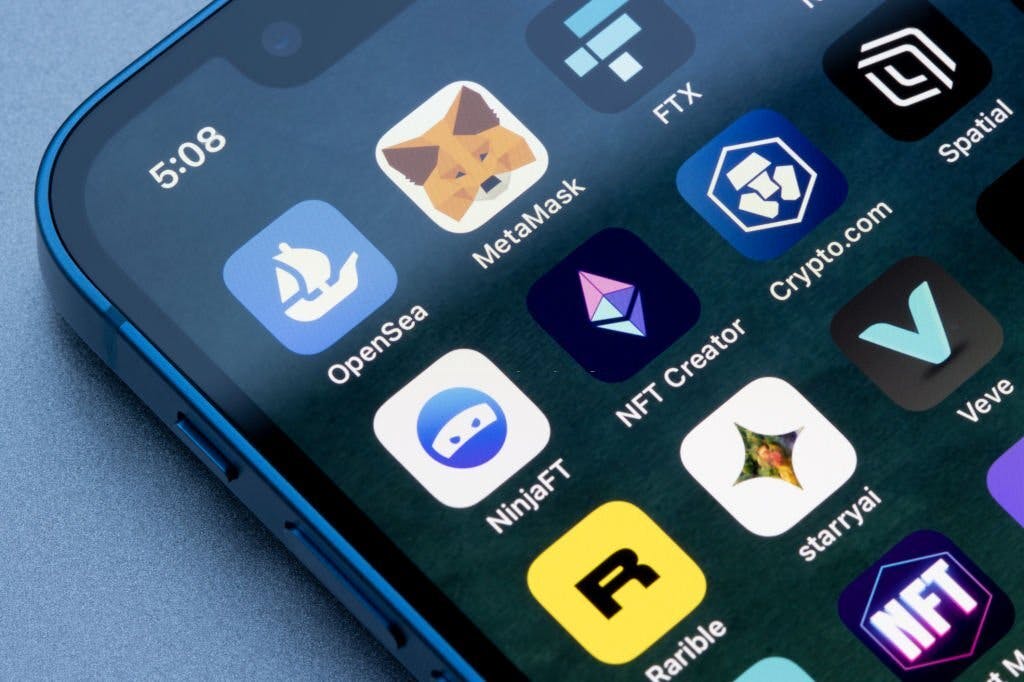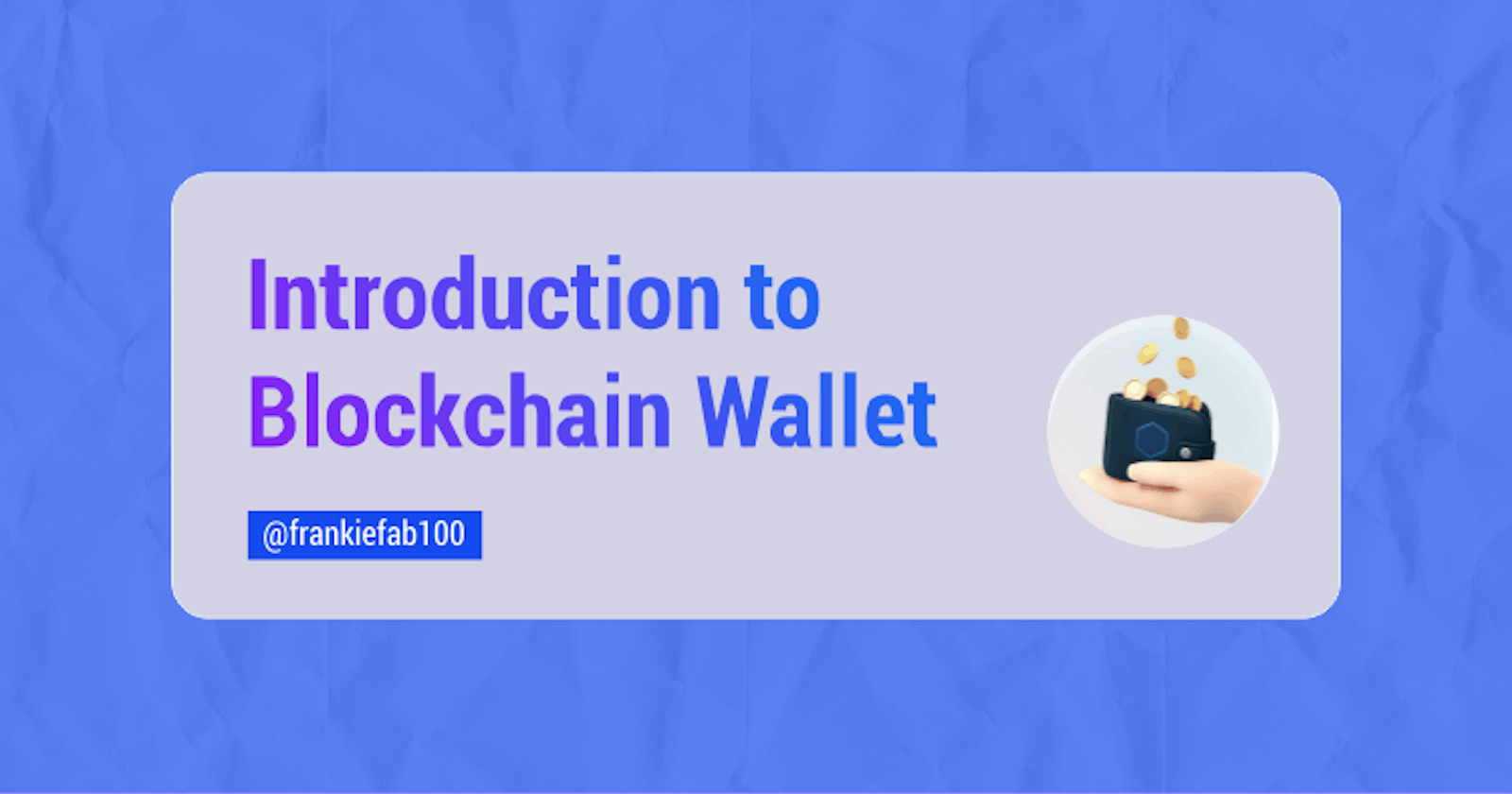Introduction to Blockchain Wallet
An introductory insight into blockchain wallets, classification, examples, and how to keep a blockchain wallet safe from hacks.
A blockchain wallet is a must-have tool for any cryptocurrency investor or web3 enthusiast interested in interacting with decentralized applications, purchasing Non-Fungible Tokens (NFTs), or holding cryptocurrencies.
What is a blockchain wallet?
A blockchain (or crypto) wallet is a digital wallet that allows users to store, manage, and trade their cryptocurrencies and other blockchain-based digital assets. It securely enables users to store, send or receive cryptocurrencies and other blockchain-based digital assets through a combination of public and private cryptographic keys. It usually consists of a pseudonymous 32-character public key address that can be easily restored with the 12-24 word mnemonic or seed phrase associated with it and also requires passwords for the users' protection.
It consists of:
Public key: The user wallet address that is shared with the public or other crypto users to receive cryptocurrencies or NFTs or process transactions like transfers.
Private key: This act like a unique password or address that grants complete access to a user's funds. It proves ownership of digital assets associated with a wallet address and therefore should be kept private.
Uses of blockchain wallet
A blockchain or crypto wallet allows you to:
Interact with decentralized applications and blockchain networks.
Manage not only your funds, but also NFTs, POAPs, DAO governance tokens, and other collectibles.
It acts as a personal on-chain identity or passport.
Classification of Blockchain Wallets
Blockchain wallets are classified into:
1. Non-custodial blockchain wallets
Non-custodial blockchain wallets offer private keys and complete control of funds to their users. They are not convenient to use and don't have trading functionality, although it has support for decentralized exchanges for swapping cryptocurrencies for another.
Examples of Non-custodial blockchain wallets
Hardware Wallets: Common examples of hardware wallets are Trezor and Ledger, which are portable just like flash drives. They are notably the safest blockchain wallets for cold storage of cryptocurrencies and other digital assets. They are less vulnerable to hacks since they are offline and not connected to any decentralized application or protocol through the internet.
Web-Based Wallets: They come as browser extensions and offer efficient use of web3 protocols such as NFT marketplaces. The majority of blockchain wallets nowadays exist as web browser extensions. Examples of Web-Based Wallets include MetaMask, Wallet Connect, Phantom, Argent X, Tally Ho, Petra, and so on.
Mobile Wallets: These are application software downloadable from app stores. They are vulnerable to the risks of malware infections and virus attacks. Some examples of wallets that fall into this category are Valora, Zerion, Pera Algo wallet, Rainbow, MetaMask, Blockchain.com, and Trust Wallet.
Multisignature wallets: Commonly called multi-sig wallets are blockchain wallets that require two or more users to sign in with their private keys to confirm or make a transaction. For example, Gnosis safe is a suitable multi-sig wallet for Decentralized Autonomous Organizations (DAOs) and enterprises' management of funds.
2. Custodial blockchain wallets
These classes of blockchain or crypto wallets are provided and managed by centralized exchanges that act as the custodian, responsible for securing and holding their user's funds. The wallet provider controls the security keys that grant access to the stored cryptocurrency and digital assets.
To own a custodial wallet, the user is required to complete verification through Your Customer (KYC) identity to have total access to all options and features provided on the platform. They have inbuilt trading functionality for easy buying and selling of cryptocurrencies. It also offers the freedom to create multiple individual wallets in an account. The cons of this wallet are that it is vulnerable to hacks, rug pull, or scams since the user's private keys are held by a third party and the wallet holdings are kept in hot storage.
Examples of Non-custodial blockchain wallets
How a Blockchain Wallet Works
A user is provided with a unique address similar to a bank account, once they sign up. To make a purchase or exchange cryptocurrency, a user can either send a request to another user to transfer a token in exchange for fiat, or they can fund their wallet from a bank if it's a custodial wallet. For a non-custodial wallet, there is an option to swap a cryptocurrency for other using decentralized exchanges. Every cost of processing a transaction is covered by gas fees.

How to keep a blockchain wallet safe
Wallet security is an important consideration for users, as a compromised account may result in users losing control of their assets. Here are some things to note to keep your cryptocurrency wallet secure:
Your seed phrase or private key should keep confidential written on physical paper and not shared with anyone.
Large crypto holdings should be stored in a cold wallet such as Ledger.
Enable two-factor authentication (2FA) for additional wallet security.
Confirm links to protocols or exchanges before interacting with them to avoid scams from phishing websites.
Thank you very much for taking the time to read this, I hope you found this helpful. Please share and check other articles on my blog.

